No products
Top sellers
-

Dried Bhut Jolokia Chocolate
[850,000 SHU] Chocolate version of the organic dried Bhut Jolokia....
0,99 € -

Dried Habanero chocolate
[250,000 SHU] The organic version of the dried "Black Congo". It is...
0,99 € -

Black Panther Orange seeds
[1.000.000 SHU] [Hybrid F4] Black Panther Orange is a novelty of...
4,99 € -

Dried Habanero White Bullet
[250,000 SHU] Habanero White Bullet are ready to be launched into your...
0,99 € -

Dried Habanero White Giant
[250,000 SHU] It is sweet and uncommon this chilli pepper, it was born...
0,99 € -

Dried Pimenta da Neyde White
[200,000 SHU] [F2 hybrid] White and hybrid version of the Pimenta da...
0,99 € -

Dried Habanero Mustard
[250,000 SHU] Habanero Mustard is like a lanter that light your dishes...
0,99 € -

Dried Habanero Yellow
[250,000 SHU] Habanero Yellow will light you with your bright colous,...
0,99 € -

-

Dried Carolina Reaper Chocolate
[2,000,000 SHU] [F3 hybrid] Chocolate color version of the dried...
0,99 €
Categories
PESTS AND DISEASES OF CHILLI PEPPERS
|
PESTS:

ACARUS |Index
These parasites usually take possession of the upper part of the leaves, and seen that they are very small it is impossible to see them with the naked eye, but the little red spider, which stands out on the leaf for its colour.
The attack by the mites is evident with a loss of vigour of the plant , with evident discoloration of the leaves and their fall, and if the plant is attacked by the eriophids the loss of leaves affects the whole plant.
Prevention: Mineral oil in November, January and February.
Natural remedies: Phytoseiulus tetranychum.
Chemical remedies: All acaricides are fine.
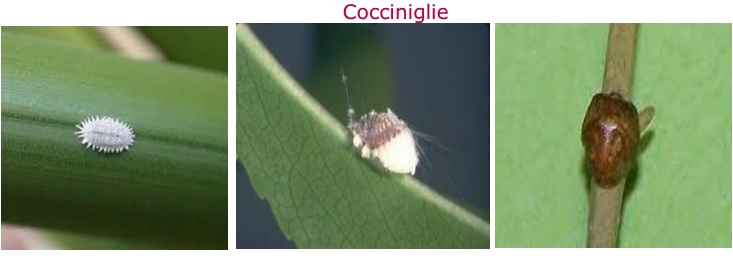
LADYBUGS| Index
Ladybugs can affect several plants and hide especially in cracks and in shady areas.
The obvious signs of their presence are sticky leaves, waxy barriers or formations that resemble cotton wool where the parasites hide.
If the infection is not particularly aggressive, it is possible to act manually by disinfecting the leaves with alcohol, if it is serious it is necessary to use white oil activated with a pyrethroid or with malathion. In order to obtain a better result, it is recommended to treat the plants in early spring or in autumn - winter with an anticoccidic that allows you to destroy the remaining eggs.
How to prevent? Use mineral oils, copper, prospaltella berlesei (predators).
Natural treatments: Vegetable oils, predators.
Chemical treatments: anticoccidic at first appearance.
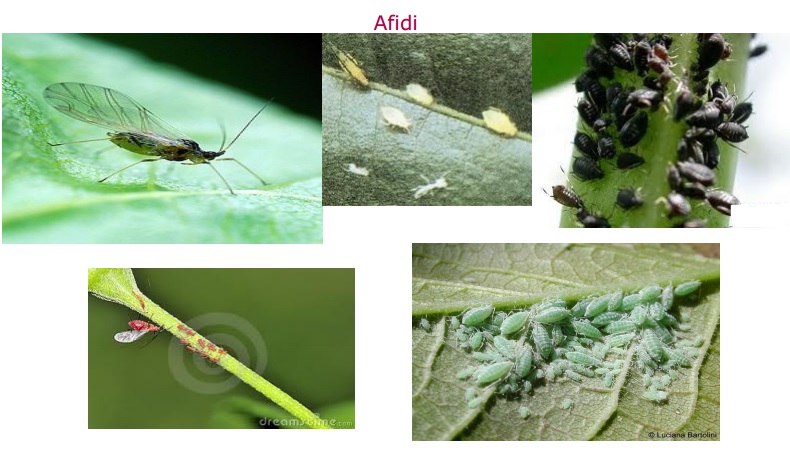
APHIDS |Index
Aphids means a set of fidomizi insects (commonly called lice).
The first obvious sign of their presence are the sticky leaves and the ants present on the plant (these because they eat the substance produced by the aphids, the honeydew).
Prevention: A lavender bush every 5 square meters, 3 cloves of garlic and the juice elongated with 1 liter of water to give to the leaves, natural predators that in nature eat aphids (eg: Beetles Coccinellidi, Diptera Sirfidi, Neurotteri Chrysoperi etc).
Natural remedies: pyrethrum, neem oil, etc.
Chemical remedies: Any aficida (recommended the systemic one to be given only at the first appearance).
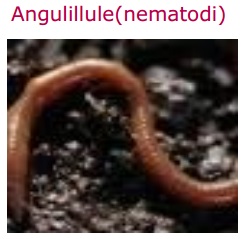
EELS (ANGUILLULE) | Index
The eels are microscopic worms that live in the diseased tissues of the plants, they are toxic and for this reason they must be immediately eliminated because they lead to the death of the plant.
The signs of their presence are dark spots delimited by the veins. The wet leaves favour the contagion.
Prevention: Arthrobotrys superba, Bioact WG (bio).
Natural remedies: Solarization, bringing the culture medium to a temperature of 45/50 C I compete for 3 hours and Bioact WG (bio).
Chemical remedies: Fumigants (dazomet and metam sodium), Non Fumigants, Carbamates (aldicarb, carbofuran, oxamyl), Phosphorganic (cadusafos, ethoprophos, fenamiphos, fosthiazate).
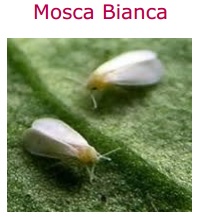
WHITE FLY|Index
They settle and nourish of the lower part of the plant, causing yellowing of the leaves and a weakening of the whole plant, in situations of strong presences the plant can also lose all the leaves and die. These parasites produce a lot of honeydew which the ants nourish (and this explains their presence on the plant) and also can develop in turn some smokes.
Natural remedies: Yellow chromotropic traps and/or pheromones.
Chemical remedies: Perform very close treatments with each other, one each week for a month, using products made of pyrethrum, acephal, dimethoate + endosulfan, or imidacloprid, repeating the treatment once a month.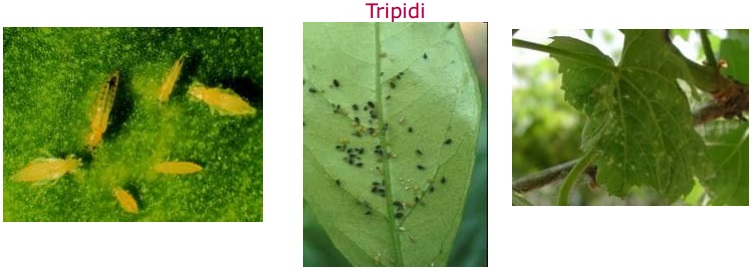
THRIPS| Index
The thrips are small insects that are noticeable on the leaves because they are mainly blackish.
Prevention: Yellow chromotropic traps and/or pheromones.
Natural remedies: Treatments with antagonistic insects (e.g.: olius leavigator is an anthcoride predator of thrips), pyrethrum and roll-gard blue (blue chromotopic traps).
Chemical remedies: Treat with specific products one every 10 days following the directions on the labels and advice of the shopkeeper.
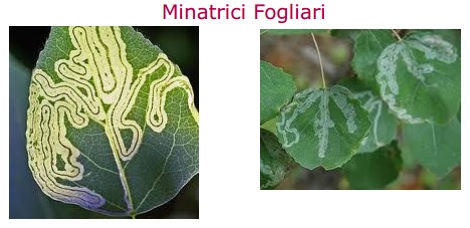
LEAF MINORS|Index
At the hatching of the eggs the larvae penetrate the mesophile causing the early fall of the leaf.
Prevention: Yellow chromotropic traps and/or pheromones.
Natural remedies: Lepinox plus, yellow chromotropic traps, biological control techniques such as Hymenopteran Eulofide Diglyphus isaea, parasite ide ectophagous larvae of Liriomyza trifolii.
Chemical remedies: Larvicides with endotherapeutic action.

BUGS| Torna all’indice!
The bug feeds on the sap of the plant. To reach the tissues it tears the plant, weakening it and facilitating the attack of fungi and bacteria .
On the leaves are evident zones without life , more or less evident. On the fruits, during the ripening phase, they cause particular chlorotic punctuations which transform in localized necrosis very nuanced.
Prevention: Chromotropic traps.
Natural remedies: Pyrethrum.
Chemical remedies: Pyrethroid insecticides.
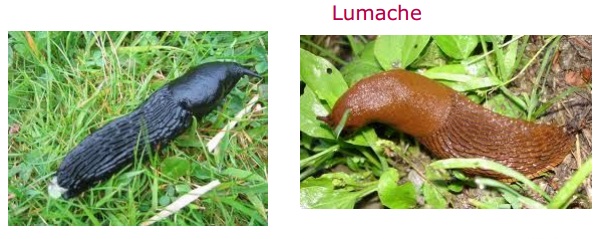
SNAILS| Index
Snails or slugs with their tongue called "glade" damage the leaves. The presence of snails is easily recognizable by the leaves which have holes with evident blackish traces of excrement.
Prevention: Lumachicids.
Natural remedies: Manual elimination at dawn and in the evening.
Chemical remedies: Lumachicids.
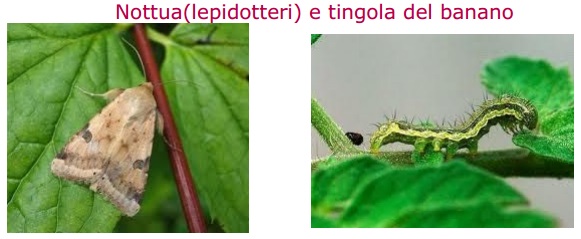
NOTTULA e TINGOLA |Index
The nottula and the tringola are larvae that attack all the aerial organs of the plant, the damage is evident on the leaves, the flowers and the fruits. On the leaves and on the flowers the larva causes unusual abrasions, on the fruits it digs inside in the pulp, passing from one fruit to another with consequent very serious damages.
Prevention: Yellow chromotropic traps and/or pheromones.
Natural remedies: Solution of water or saponaria or chopped garlic. Naturalis.
Chemical remedies: Confidor, Decis Jet, Provado, Skorpio.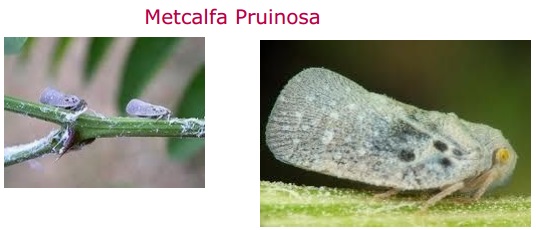
METCALFA PRUINOSA |Index
The pruinose Metcalfa nourishes of the nymph which the host plants procure.
The hatching of the eggs begins by the first half of May ,begin to appear at the beginning of July, are 7-8 mm long with grey wings, produce metala (presence of ants on the plant which nourish of this substance and smoke). The damage is the consequence of the deprivation of the lymph, from the production of honeydew and wax of whitish colour that tarnishes leaves, shoots, buds and bunches.
Prevention: Yellow chromotropic traps.
Natural remedies: Yellow chromotropic traps, Neodryinus typhlocybae (predatory insect).
Chemical remedies: Chlor pyrifos and Fenitrothion (active ingredients).
OZIORRINCO | Index
It is the larva of a beetle that when adult is brown/blackish 10mm long similar to a beetle, at night rises on the plants and nourishes of the leaves.
Prevention: Pershing, Provado in April and October
Natural remedies: Larvanem - Nemasys L
Chemical remedies: Pershing microgranular in soil in October and January
TENTREDINE WINDE | Index
It’s a little black-headed hymenoptera and a yellow body dotted with black.
It nourishes of the lamina of the leaves leaving only the nervations and causing also the death of the plant itself, which, in order to defend itself, rolls up the leaves.
Prevention: Pershing, Provado in April and September
Natural remedies: Adina 10, Naturalis, Piretro
Chemical remedies: Decis Jet - Confidor

TORTRICI | Index

GREY MOULD |Index
It can attack all the organs of the plants causing the formation of foliar spots, rottenness of the buds and of the flowers. It is very easily identifiable as the characteristic mold is formed on the affected organs.
How to prevent? Moisture on leaves should be avoided
Natural cures: Dodina, Index, Copper
Chemical treatments: Pomarsol - Folicur SE

OIDIO OR WHITE EVIL |Index
Causes the appearance on the leaves of a whitish efflorescence of dusty appearance that gives off a typical mushroom odor.
How to prevent? With sulfur or sodium bicarbonate 200 g per 1l of water
Natural Cures: Sulfur, Sodium Bicarbonate
Chemical treatments: Folicur SE - Proclaim Combi

NECTRIA GALLIGENA |Index
The Nectria Galligena is a sporigen fungus that rests on the branches, on the stem and on the leaves.
It manifests with small ulcers that gradually grow larger, presenting on the woody tissues burnished lesions that over time assume a characteristic target with callous scar area.
How to prevent? You must disinfect scissors and knives; prune and burn the affected branches
Natural Cures: Copper, Dodina, Index

TICCHIOLATURA OR BLACK BLOTCH | Index
Cryptogamic disease, present on ornamental plants with the presence of fungi belonging to the genus diplocarpon or marssonin. The disease generally affects leaves, stems and fruits.
How to prevent? With concentrated copper (in October, November and January)
Natural Cures: Copper, Dodina, Index
Chemical treatments: Folicur SE

PERONOSPORA | Index
On the leaves it manifests on the upper page, with spots initially pale that then
darken and dry, while on the lower page appears a white efflorescence. On the stems appear similar spots with loss of turgescence until the stem does not break. In the fruits are evident irregular brown spots with coriaceous and irregular surface. The rottenness causes the death of the berry.
How to prevent? With copper (in October, November and January)
Natural Cures: Copper, Dodina, Index
Chemical treatments: Folicur SE - Proclaim Combi

RUST AND ELMINTOSPORIOSI | Index
This pathogen occurs in spring and reaches its peak in June.
It appears with the evidence of small yellow spots on the upper side of the leaf, whilst in the lower part appear powdery lumps of yellow colour (spores). As time goes by, these spots darken up to a blackish colour.
This disease, if it massively attacks the plant, causes a vegetative blackout and a consequent yellowing. This does not cause the immediate death of the plant, which slowly decays, completing the vegetative cycle.
How to prevent? With concentrated copper (in October, November and January)
Natural Cures: Sulfur, Sodium Bicarbonate
Chemical treatments: Folicur SE, Proclaim Combi dithianon or thiophanate methyl.

FUMAGGINE | Index
The fumaggine is evidenced by the presence of a group of saprophytic fungi, which do not attack the plant but which nourish of attacked substances (honeydew) which are produced by various insects, such as the aphid, the cochineal and the metcalfa. Its presence is noted with the formation of dark and sooty structures, formed by the miceli intertwined with each other. These filaments, if they are compact and numerous, deprive the plant of the light useful for its survival. If the attacks are lasting over time the plant weakens and can reach death. There are different types of smokes: from the dry and crusty ones to the softer and greasy ones. Usually, this fungus has a blackish brown colouration, which gives the attached plant an unaesthetic look.
How to prevent? Eliminate the main producers of honeydew and remove it from the leaves
Natural Cures: Copper, Dodina, Index
Chemical treatments: Folicur SE - Proclaim Combi

RADICAL ROTTENNESS| Index
The root rot is mainly caused by a fungus, the armillaria mellea. Generally, plants affected by Root Rot have stunted growth, chlorotic leaves, weak branches and other symptoms, which can often be confused with other diseases. In order for this disease not to appear, it is important to avoid water stagnations (especially during the rest periods of the plant). If the plant has already been affected superficially, it is advisable to remove and burn the affected branches and disinfect the trunk collar with copper products.
On the contrary, if it is aggressive, it will be necessary to completely eradicate the plant in order to avoid the disease spreading on the nearby plants. Therefore an effective remedy is to thoroughly disinfect the soil with sulphur products.
How to prevent? Eliminate water in eccess
Natural cures: sulfur
Chemical treatments: Folicur SE - Proclaim Combi and fumigants

ROT OF THE COLLAR OF THE ROOTS| Index
Possible sources of infection are both fruit falling to the ground and contaminated plant residues remaining in the soil. Absorption is either direct or through wounds. The affected plants have a general malaise, with chlorotic leaves, withered and early fall, until reaching, in the most serious cases, the death of the entire plant. At the level of the collar there are spongy thicknesses and flaking of cortical tissues, the color of the bark appears darker and there are large necrotic areas of the central cylinder. The fruits, as a result, rot.
How to prevent? Eliminate and avoid water that stagnates, injuries, respect the depth in planting and place the drippers away from the stem
Natural care: copper compounds allowed
Chemical treatments: copper compounds, phos-ethyl aluminium and Bordeaux pulp

ANTRACNOSI | Index
Small necrotic spots on leaves, petioles and fruits of roundish shape and well delimited margins.
Treatements: Poltiglia Bordolese
ASCOCHYTA | Index
Genus of Deuteromycetes Fungi, belonging to the family of the Spheroidaceae, with 400 species, mostly saprophytes and maculicules. Some produce more or less corroded spots on the cultivated Solanaceae leaves, on the artichoke, on the asparagus, etc.
Treatment: You must remove and burn the affected parts.

ALTERNARIA | Index
It appears on the leaves with small translucent spots, surrounded by a reddish margin which, when enlarged, necrotize ; in the fruits they appear with circular necrotic spots outlined by mould.
Treatment: Chloride oxides of copper
FUSARIUM | Index
The fungus causes the yellowing of the leaf which then darkens and dries, it quickly extends to the whole plant which in a short time dies.
Treatment: Poltiglia Bordolese

MYROTHECIUM | Index
Usually, on the leaves brown circular spots are formed with the fruiting bodies of the fungus in the centre. It is recommended to always eliminate the part attacked being the best cure for prevention.
Cure: Chloride oxides of copper

MONILLIOSI | Index
On the branches are formed some spots, elongated or roundish, which in a short time slot longitudinally, with formation of cancers that lead to the rapid death of the distal portion of the affected organ, so quickly that the leaves and the flowers do not have time to detach.
The attacked flowers darken and dry up, the inflorescences become disarticulated and fall off. On the fruits you can have brown rot, black rot and rot of the heart. The brown rot is
represented by a roundish area around a wound, of brown colour, on which are differentiated yellow-ochre bearings, in concentric circles (Mold in circles). As a result, the fruit either disintegrates rapidly or becomes a mummy, dehydrating and acquiring a woody appearance. Black rot occurs when the infection remains in larval form and mold does not form outside. In the rot of the heart the infection is localized around the seeds: the fruits are coloured more quickly and fall off.
How to prevent? No prevention.
Natural cures: eliminate affected parts and treat with copper (ambienta zapi)
Chemical cures: copper fungicides
CORINEUS |Index
Initially,, the leaves show purple-red notches, surrounded by a chlorotic halo which later becomes reddish. The notches then assume a circular shape, with a diameter of a few mm, finally dry and fall, presenting the characteristic "impallinatura". On the growing fruits there is the formation of small craters ("butteratura"), whilst on the ripe fruit small reddish spots are formed, covered by rubbery incrustations.
Prevention: nothing
Natural care: export the areas concerned and treat with copper (ambienta zapi)
Chemical cures: we recommend rameic fungicides

DASHEEN MOSAIC VIRUS | Torna all'indice!
They are viruses that cause important changes in the shape and colouration of the leaves of infested plants . Their origin can be caused by insect pests of plants. This pathogen does not determine the death of the plant but only aesthetic damage.
Cure: We recommend to eliminate the affected parts by burning them




